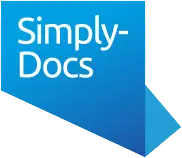Website Design and Development Agreement (Pro-Developer)
This Website Design and Development Agreement has been written for use by web designers and developers to govern the design and development of complete websites for clients.
This agreement is designed to cover straightforward website design and development. Alternative versions are available for websites that are also supplied with a ‘toolkit’ for ongoing operation, maintenance, and the like.
The data protection provisions in this document have been updated with reference to the UK GDPR.
This version of the template has been written in favour of the developer. A client-biased version is also available.
Additional provisions in this ‘pro-developer’ version over and above the ‘pro-client’ version include a clause imposing certain responsibilities on the client, ensuring that cooperate properly with the developer so that the developer can, in turn, comply with their own obligations. In addition, whereas in the pro-client version, only the client can request or propose changes to the project specification, in this version of the document, either party is entitled to do this.
The testing provisions in this version of the document also differ, rendering the website ‘accepted’ for the purposes of the contract if the client uses it in business despite defects being found, or unreasonably delays the testing process.
From a liability standpoint, the provisions of both the pro-client and pro-developer documents remain reasonably balanced; however, in this pro-developer version, the developer benefits from additional exclusions of liability for damage to software, hardware, and data.
This is a business-to-business (B2B) contract. Certain laws protecting consumers will therefore not apply and this document should not be used in a business-to-consumer (B2C) situation.
Detail is very important in a contract such as this. The developer needs to know exactly what they are contractually obliged to produce and provide for the client, and under what terms. A separate Project Specification should be agreed upon between the developer and the client - this will form one of the key elements of the contract and should be inserted into the contract in the schedule provided.
Before the client accepts the website, it should be tested thoroughly. The exact details of the testing (and re-testing, in the event of failure) should be agreed between the client and developer and then described in detail in the schedule provided. Various options are open to the client if the website is still faulty after re-testing.
Fees and payment terms should be set out in detail in the schedule provided. The main body of the agreement contains only the essential provisions.
Optional reference is made to third-party software. This may, for example, be used for back-office functionality such as content management. Full details of any such software should be provided in the optional schedule and the licence fees payable should be detailed along with the rest of the fees and payment information.
Liability is another important area addressed by this document. The provisions included represent a reasonably standard position, but it is very important that the final terms are negotiated and agreed upon by both the client and the developer.
The UK's data protection legislation is addressed in this template, in particular via an optional data processing clause. This provision assumes that the client is the data controller and the developer is the data processor. If the developer will not have any involvement with the live website (and, therefore, no access to users’ personal data or similar) this clause may not be necessary; however, if the developer’s involvement goes further than initially planned, they may end up having access to such data. Use (or remove) this clause with care.
Please also note that the data processing provisions in this document have been designed to strike a reasonable balance between coverage, detail, and brevity. In some cases, more detail may be desirable in which case a separate data processing agreement is available. An optional alternative to the full-length data processing clause is included in this document which cross-refers to a separate processing agreement. If in any doubt, suitable legal advice should be obtained first.
Personal data relating to the parties’ staff will also be exchanged when using this agreement. A general data protection clause has been included, referring to each party’s adherence to the law and to their respective data protection policies.
Optional phrases / clauses are enclosed in square brackets. These should be read carefully and selected so as to be compatible with one another. Unused options should be removed from the document.
This document contains the following clauses:
1. Definitions and Interpretation
2. Project Specification and Client Site Materials
3. Client’s Responsibilities
4. Project Management and Reporting
5. [Third-Party Software]
6. Development, Testing, and Acceptance
7. Fees and Payment
8. Intellectual Property
9. Warranties
10. Liability
11. Data Protection
12. [Data Processing]
13. Confidentiality
14. Term and Termination
15. Force Majeure
16. Audit
17. No Waiver
18. Further Assurance
19. Costs
20. Assignment and Sub-Contracting
21. Relationship of the Parties
22. Third Party Rights
23. Notices
24. Entire Agreement
25. Counterparts
26. Severance
27. Law and Jurisdiction
and the following schedules:
1. Project Specification
2. Acceptance Tests and Acceptance Retests
3. Project Fees
4. [Third Party Software]
5. [Developer’s Data Protection Policy / Notice]
6. [Client’s Data Protection Policy / Notice]
7. [Data Processing]
This Website Design and Development Agreement is in open format. Either enter the requisite details in the highlighted fields or adjust the wording to suit your purposes.
Once you have purchased access to the appropriate document folder click on the “Download Document” link below. You will be asked what you want to do with the file. It is recommended that you save the document to a location of your choice prior to viewing.
Website Design and Development Agreement (Pro-Developer) is part of Business . Just £38.50 + VAT provides unlimited downloads from Business for 1 year.


